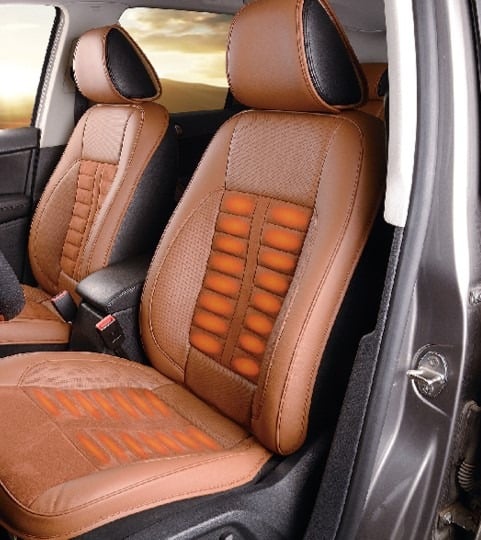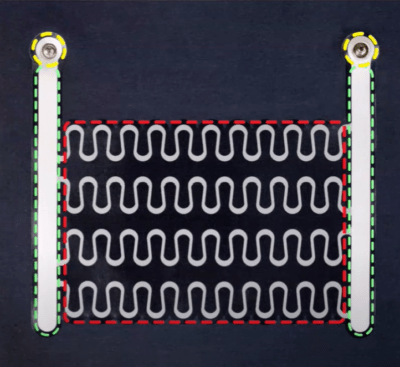It is common for multiple prototypes to be made and tested to find the best heater for your application. Butler Technologies has been manufacturing printed heaters for years. Our engineers are ready to help you design your flex heater application. The process can go quicker if you also have a clear understanding of critical flex heater design elements. The first thing to consider is the intended use for the end-user. Once you understand the application and its needs, you can begin designing a flex heater. Butler Technologies Inc.’s engineers can help you establish temperature, size, power, and connector tail parameters.
1. End-Use
There are a lot of different factors to consider when designing a flex heater. When going through the design process, start with asking yourself what the final application is. The end-use of the application can help us to determine what heater configuration is best. 
Does it need to:
- Flex?
- Stretch?
- Conform?
- Be used in an industrial setting?
- Be integrated into a wearable?
Is it a Conformable Application?
- It could be a heater for a winter coat.
- Flexes but no stretch (Ex. Woven Fabric)
- PTC Heater Design is ideal
Is it a Stretchable Application?
- It could be a heater for a recreational jacket.
- Flexes & Stretches (Knit Fabric)
- Fixed Resistance Heater is ideal
- Mechanically Designed for flex
- Horseshoe-shaped heating element
- Element made thicker for X-axis stretch
2. Operating Temperature
The second major question to consider when designing a flex heater is the operating temperature. Depending on how hot your heater is, we can pick the application that would be best. Another question to consider is where the heater will primarily be used. Will it be used for an indoor or outdoor application?
Wearable Heaters
- 95°F is typically the most comfortable temperature for direct skin contact for prolonged periods.
- Up to 110°F is usually safe for direct skin contact but can become uncomfortable for extended periods.
- For a jacket/coat heater, 110°F is a typical nominal temperature.
- 105°F to 130°F is a typical range for indirect contact heaters embedded in the garment and medical devices.
- Higher temperatures may be required to heat through textiles to reach the desired, safe skin contact temperatures (Research and Design Work is Required).
Industrial Heater Applications
- Indirect (heating space) or Direct (heating an item)
- Are there heat sink / thermal drain considerations?
- Thermal Modeling may be required.
3. Size
The overall size of the heater is different than the area actually needs to be heated. The heat radiates beyond the conductive inks and materials and heats the surrounding area. Here are some more things to consider about the size of a flex heater.
- The overall heater size is larger than the heating zone.
- Heating zone size must be considered.
- Primary Components of a flex heater:
- Busbars (outlined in green)
- Terminations (outlined in yellow)
- Heating Elements (outlined in red)
4. Power
Power requirements can be tricky to understand. When designing a flex heater, it is important to consider the voltage supply, power densities, and the battery’s size. Once the engineers figure out the battery size, they can start to calculate the current draw. The current draw helps to determine how long the heater can stay on.
- Voltage Supply
- Target Power Density
- For Wearables, typically 0.20 to 0.30 (Watts/in²)
- Scalable
- Battery Size
- Example: 5000 mAhr
- The battery size will determine the length of heating time.
- It can vary Duty Cycle to account for battery drain.
5. Connections
There are different kinds of heater connections to consider. Snaps can be simple to use for applications that require a removable battery. Other applications require more permanent connections like crimped solder pins.
Types of connectors for flex heaters:
- Snaps
- Magnetic
- Compression
- Conductive Epoxy
- Crimped Solder Pins/Tabs
- Wire (soldered, crimped, etc. )
If you still need help developing a new product, check out our New Product Development Process Blog or give us a call!
Meet the Author

Ashley Foster is a graduate of Slippery Rock University, where she earned her Bachelor’s degree in Business Administration, majored in Business Management, and minored in Marketing. While Ashley was studying at SRU, she found a passion for marketing. She loves to spend her free time traveling and hiking with friends. Ashley is also the Vice President of Programming for the American Marketing Association, Pittsburgh Chapter, and an active alumni member of FCCLA.
